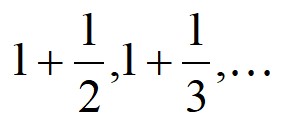The do-while loop. Examples of using
Contents
- 1. The do-while loop statement. Features of use. General form
- 2. The diagram of do-while loop statement
- 3. Examples of solving problems with the do-while loop operator
- Related topics
Search other websites:
1. The do-while loop statement. Features of use. General form
The do-while operator is used to organize a cyclic process. The difference between this statement and the while statement is that the body of the do-while statement will be executed at least once, regardless of the value of the loop execution condition.
The general form of statement
do { // statements, operators // ... } while (condition)
here
- condition – condition for the execution of the cyclic process. If the value of condition = True, then the statements placed between curly braces { } (with the words do and while) will be executed.
⇑
2. The diagram of do-while loop statement
Figure 1 shows the do-while loop.
Figure 1. The diagram do-while loop operator
⇑
3. Examples of solving problems with the do-while loop operator
3.1. Calculating the sum of a sequence of numbers
Given a nonempty sequence of integers that ends with zero. Calculate the sum of all numbers in a sequence.
The text of the program for an application such as Console Application is as follows
using System; using System.Collections.Generic; using System.Linq; using System.Text; using System.Threading.Tasks; namespace ConsoleApp8 { class Program { static void Main(string[] args) { int number; // input number int summ = 0; // sum of numbers // The loop of input numbers, 0 - output do { // Enter a number using the keyboard Console.Write("Input number (0 - exit): "); number = Int32.Parse(Console.ReadLine()); // Calculate the sum summ += number; } while (number != 0); // Print the sum Console.WriteLine("sum = {0}", summ); Console.ReadKey(); } } }
The result of the program
Input number (0 - exit): 1 Input number (0 - exit): 9 Input number (0 - exit): 2 Input number (0 - exit): -3 Input number (0 - exit): 0 sum = 9
⇑
3.2. Search for a value in a series of numbers
The number a (1<a≤1.5) is given. Among the numbers
find the first, less than a. Program text for an application of Console Application type.
using System; using System.Collections.Generic; using System.Linq; using System.Text; using System.Threading.Tasks; namespace ConsoleApp8 { class Program { static void Main(string[] args) { double a, t; int n; // Input the value of a Console.Write("a = "); a = Convert.ToDouble(Console.ReadLine()); // Checking the value for correctness. if ((a < 0) || (a > 1.5)) { Console.WriteLine("Error. The value of a is incorrect."); return; } n = 1; // loop of search n do { n++; t = 1 + 1.0 / n; } while (t >= a); // Display t, n Console.WriteLine("t = {0:f6}, n = {1}", t, n); Console.ReadKey(); } } }
The result of the program
a = 1.22 t = 1.200000, n = 5
⇑
3.3. Determining the number of digits in a number
Given a natural number. Determine the number of digits 7 in it.
The text of the program for an application such of Console Application type is as follows
using System; using System.Collections.Generic; using System.Linq; using System.Text; using System.Threading.Tasks; namespace ConsoleApp8 { class Program { static void Main(string[] args) { // Determining the number of digits 7 in the number int number; int t; int k; // Input number Console.Write("number = "); number = Convert.ToInt32(Console.ReadLine()); if (number<0) { Console.WriteLine("Error. Incorrect number."); Console.ReadKey(); return; } // Calculation t = number; // make a copy of number k = 0; // the loop of calculation of k do { if (t % 10 == 7) k++; t = t / 10; } while (t > 0); Console.WriteLine("k = {0}", k); Console.ReadKey(); } } }
The result of the program
number = 45277 k = 2
⇑
3.4. The definition of patterns in the sequence
Given a natural number. Determine if there is a sequence of its numbers when viewed from left to right sorted in descending order. For example, for the number 9621 the answer is yes, for the number 8340 the answer is no.
Program text for an application of Console Application type
using System; using System.Collections.Generic; using System.Linq; using System.Text; using System.Threading.Tasks; namespace ConsoleApp8 { class Program { static void Main(string[] args) { // Determining whether digits of a number form a descending sequence int number; int t1, t2; bool f; // Input a number Console.Write("number = "); number = Convert.ToInt32(Console.ReadLine()); if (number<0) { Console.WriteLine("Error. Incorrect number."); Console.ReadKey(); return; } // Calculation t1 = number % 10; f = true; // the do-while loop do { t2 = t1; number = number / 10; t1 = number % 10; if (t1 < t2) { f = false; break; // the sequence is not decreasing } } while (number > 10); if (f == true) Console.WriteLine("The sequence is decreasing."); else Console.WriteLine("The sequence is not decreasing."); Console.ReadKey(); } } }
The result of the program
number = 88765521 The sequence is decreasing.
⇑
Related topics
⇑

